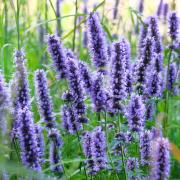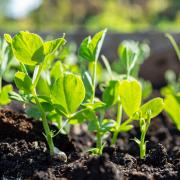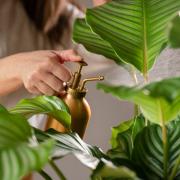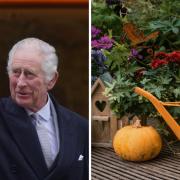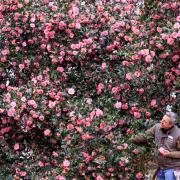It’s almost bluebell season, when we walk through woodlands cloaked in carpets of the trademark late spring flowers.
But do the bluebell woods we visit harbour English bluebells or Spanish varieties, which it is feared will reduce our native variety?
Common (English) bluebells are a protected species in the UK – It’s against the law to intentionally pick, uproot or destroy bluebells – but Plantlife, the wild plant conservation charity, says they are partly threatened by the escape of the Spanish bluebell from gardens and subsequent cross-breeding and loss of true native populations.
A previous survey by the charity, in which people recorded different species of bluebell across both urban and rural landscapes, found around one in six bluebells in broadleaved woodland was a Spanish rather than native bluebell.
The Wildlife Trusts recommends that if you are going to plant bluebells in your garden, go for the native types to help prevent the spread of non-native species into the wider countryside.

How do you tell them apart?
Native bluebells have deep violet-blue tubular-bell (or white) flowers on drooping stems, flower on one side of the stem and emit a sweet scent.
Spanish bluebells have broader leaves and have pale blue, white or pink conical bell flowers on upright stems, with flowers all around the stem, and no scent.
Leigh Hunt, RHS principal horticultural advisor, explains why we should be aiming to grow English bluebells. “The larger Spanish bluebell (H. hispanica) is pretty, but can become a problem, not just because of this spreading habit, but also due to its ability to hybridise with the native English form.”

What is the problem with a hybrid?
A hybrid plant is the offspring produced by cross-pollinating one form and the other. This process of cross-pollination, rather than pollination between plants of the same form (species), generally creates stronger, healthier, improved offspring, said to have ‘hybrid vigour’.
“Hybrid forms could potentially oust native bluebells and so we advise against growing Spanish bluebells so they can’t cross pollinate with native bluebells, changing the iconic bluebell woods we all enjoy,” Hunt says.
Plantlife recommends that gardeners must take care to avoid planting Spanish or hybrid plants in the countryside or near native bluebell populations.
Are native bluebells rare?
No, they’re not rare, but if you want a good wildlife garden they provide an early source of nectar for butterflies, bees and hoverflies, he notes.
Where can you buy them?
Bluebells can be bought as loose bulbs cheaply in autumn or growing in pots in spring. They can be grown under trees or shrubs that lose their leaves in winter, as they will largely grow and bloom before the leaves fully appear in spring.
You’ll need enough room for the plants to grow, flower and for the leaves to die back naturally to encourage really good flowering.
When buying bluebells as bulbs or in the green, how do you know what type they are?
“You can really only tell when they are in bloom,” says Hunt. “English bluebells are highly scented, rich deep mauve-blue, and have downward hanging flowers. Spanish and hybrids tend to be a paler blue, larger individual flowers with blooms that can face upward. If you are concerned seek assurances from suppliers.”
Are Spanish bluebells easily available to buy here – and will it say ‘Spanish’ on the bulb packet?
Yes. they are available to buy and it should say on the packet. However, sometimes bulbs are unintentionally sold under the wrong name, so do check what the plant looks like when it flowers.
Can you grow bluebells in pots if you don’t have much space?
Bluebells can be grown in pots, so that will reduce their spread, but do remove the seedheads to prevent seed being scattered if you only want them in certain areas, Hunt advises. They are easy to grow in pots of peat-free multipurpose or peat-free loam-based composts. Plant bulbs about 2in deep and keep compost moist from October-June to promote best growth and flowering.





